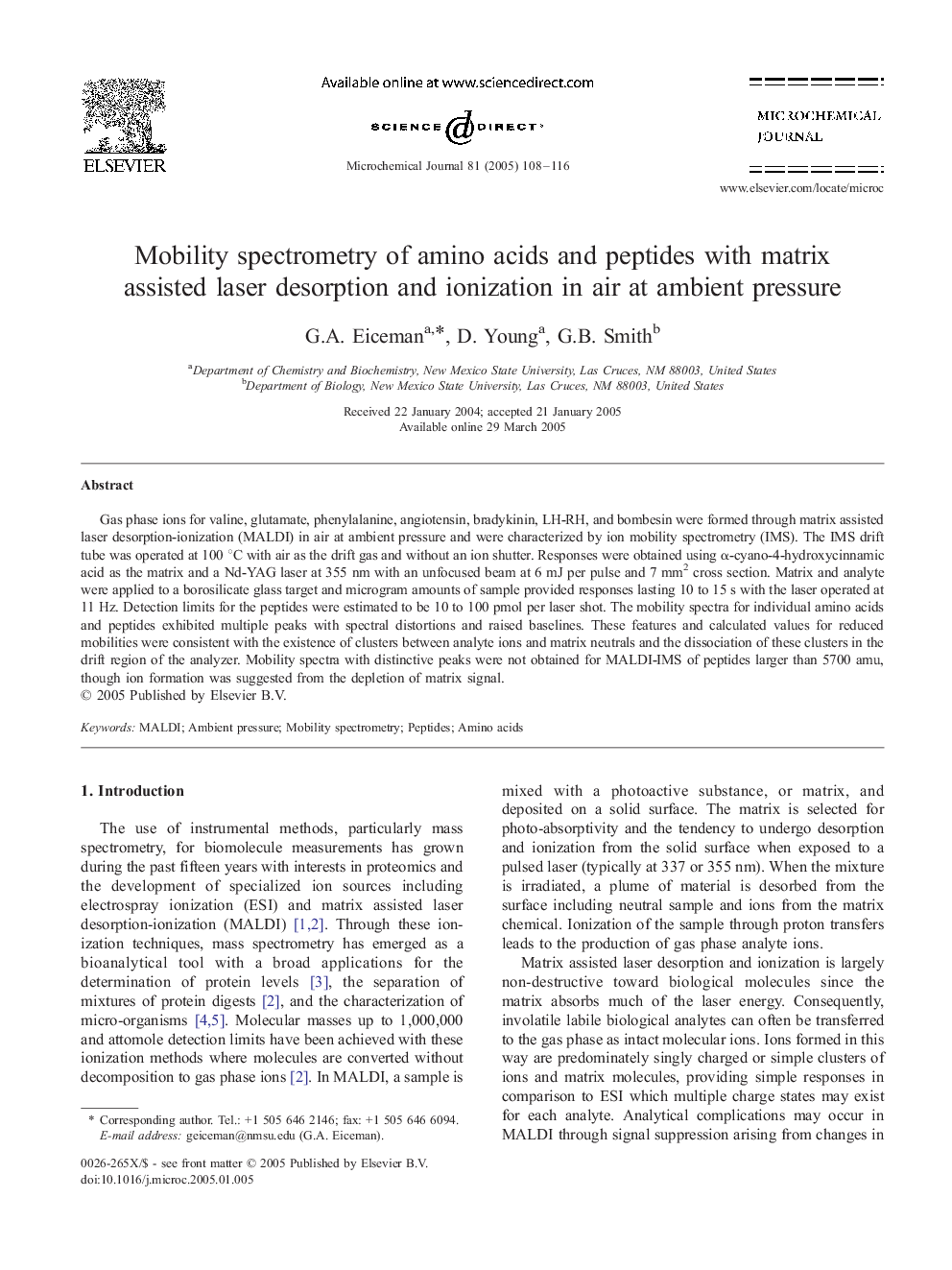| Article ID | Journal | Published Year | Pages | File Type |
|---|---|---|---|---|
| 10557226 | Microchemical Journal | 2005 | 9 Pages |
Abstract
Gas phase ions for valine, glutamate, phenylalanine, angiotensin, bradykinin, LH-RH, and bombesin were formed through matrix assisted laser desorption-ionization (MALDI) in air at ambient pressure and were characterized by ion mobility spectrometry (IMS). The IMS drift tube was operated at 100 °C with air as the drift gas and without an ion shutter. Responses were obtained using α-cyano-4-hydroxycinnamic acid as the matrix and a Nd-YAG laser at 355 nm with an unfocused beam at 6 mJ per pulse and 7 mm2 cross section. Matrix and analyte were applied to a borosilicate glass target and microgram amounts of sample provided responses lasting 10 to 15 s with the laser operated at 11 Hz. Detection limits for the peptides were estimated to be 10 to 100 pmol per laser shot. The mobility spectra for individual amino acids and peptides exhibited multiple peaks with spectral distortions and raised baselines. These features and calculated values for reduced mobilities were consistent with the existence of clusters between analyte ions and matrix neutrals and the dissociation of these clusters in the drift region of the analyzer. Mobility spectra with distinctive peaks were not obtained for MALDI-IMS of peptides larger than 5700 amu, though ion formation was suggested from the depletion of matrix signal.
Related Topics
Physical Sciences and Engineering
Chemistry
Analytical Chemistry
Authors
G.A. Eiceman, D. Young, G.B. Smith,
